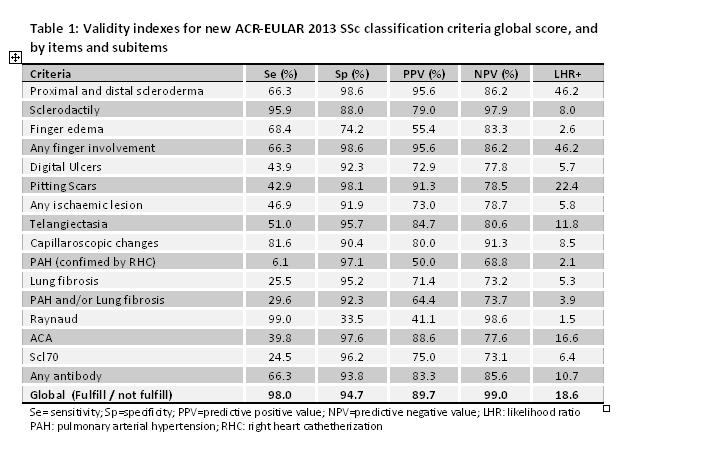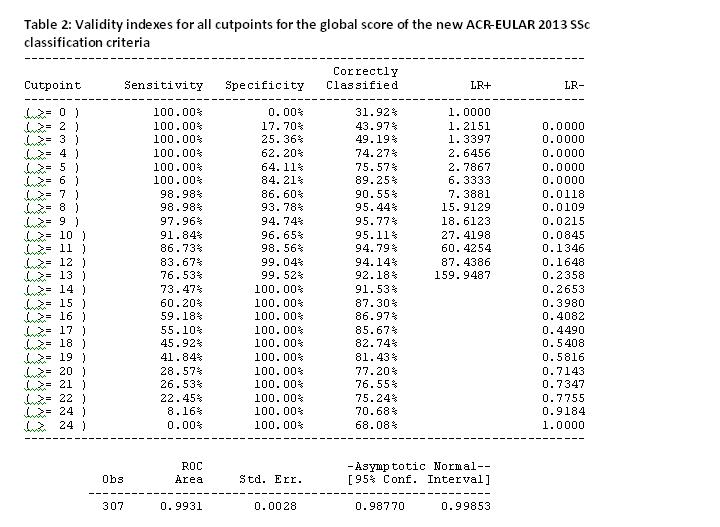Session Information
Session Type: Abstract Submissions (ACR)
Background/Purpose: To analyze the validity of the new 2013 ACR-EULAR Systemic Sclerosis (SSc) classification criteria versus SSc clinical diagnosis in patients from a capillaroscopy clinic
Methods: All patients seen for capillaroscopy between Jan2010 and Oct2013 (before criteria publication) were included. Having as gold standard the SSc diagnosis done by a rheumatologist, the performance (sensitivity, specificity, likelihood ratios) of the ACR-EULAR 2013 criteria, in full, and by items was analyzed. Receiver Operating Characteristic (ROC) curve and area under the curve (AUC) were calculated for global score, and best cut-off for the criteria score obtained
Results:
The study included 327 patients (84% women, 48±16 y). Reasons for capillaroscopy were Raynaud (40%), SSc evaluation (27%), other CTD with Raynaud (13%), CTD suspicion (10%), ischaemic lesions (1%) and others (9%). Final diagnosis was SSc in 106 (32%), idiopathic Raynaud (39%), SLE (13%), myopathy (8%), vascular related (6%), primary SS (3%) and others (30%).
The performance of the individual items in the criteria varied, being the best sclerodactily and capillaroscopic changes. The full criteria showed very high validity, with 98% sensitivity, 95% specificity and 18.6 positive likelihood ratio (Table 1). The best cut-offs of the criteria as a score were ≥8, ≥9 or ≥10 (Table 2). Finally, ROC curve showed an elevated discriminatory capacity for diagnosis of SSc, with AUC of 0.993 (Figure 1)
Conclusion: The new ACR-EULAR 2013 SSc classification criteria show high validity and discriminatory capacity for SSc clinical diagnosis done by rheumatologists in a capillaroscopy clinic setting


Disclosure:
P. E. Carreira,
None;
M. J. Garcia de Yebenes,
None;
B. E. Joven,
None;
E. Loza,
None;
L. Carmona,
None.
« Back to 2014 ACR/ARHP Annual Meeting
ACR Meeting Abstracts - https://acrabstracts.org/abstract/the-new-acr-eular-2013-systemic-sclerosis-classification-criteria-show-good-performance-in-a-capillaroscopy-clinic/
